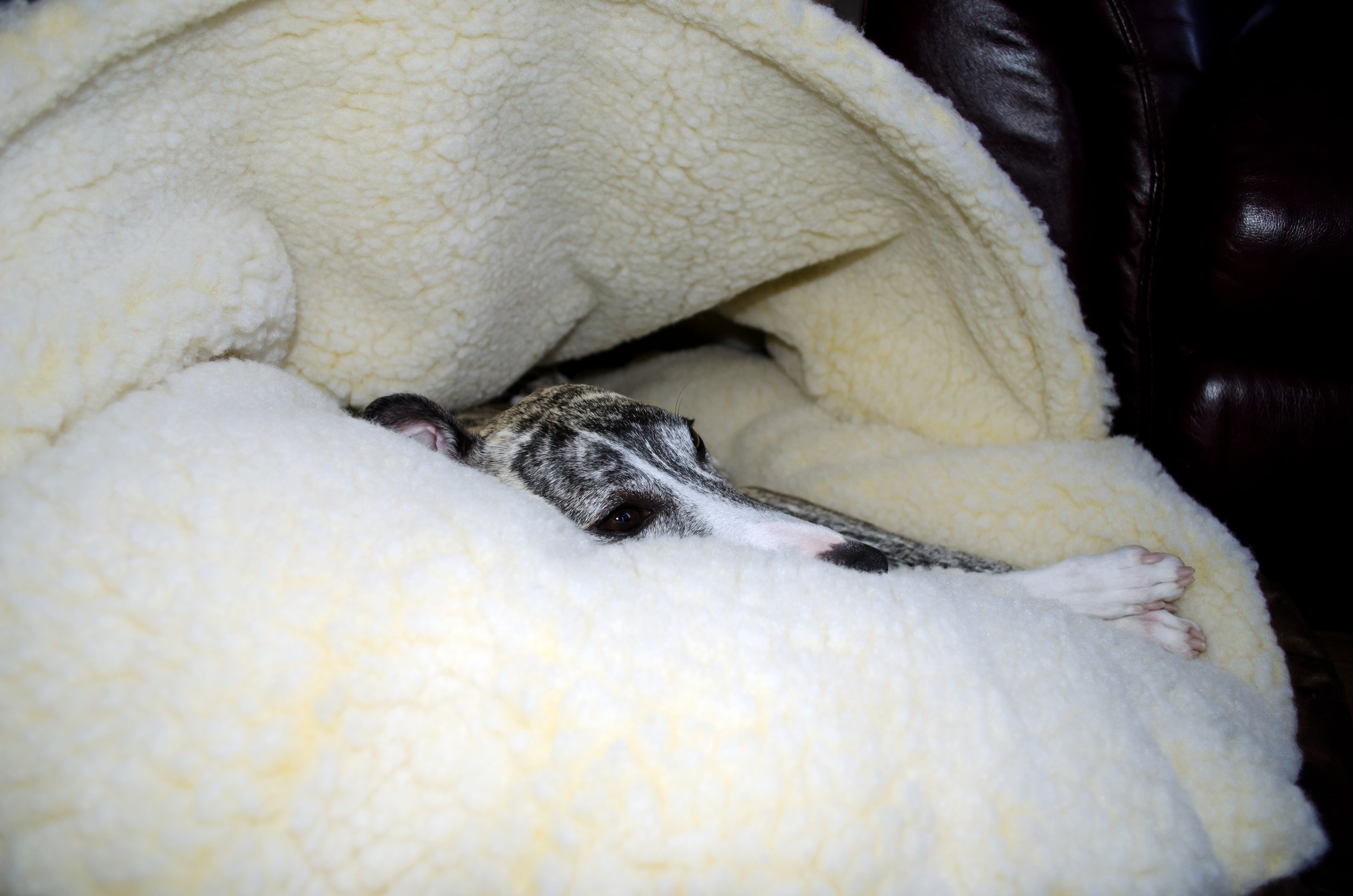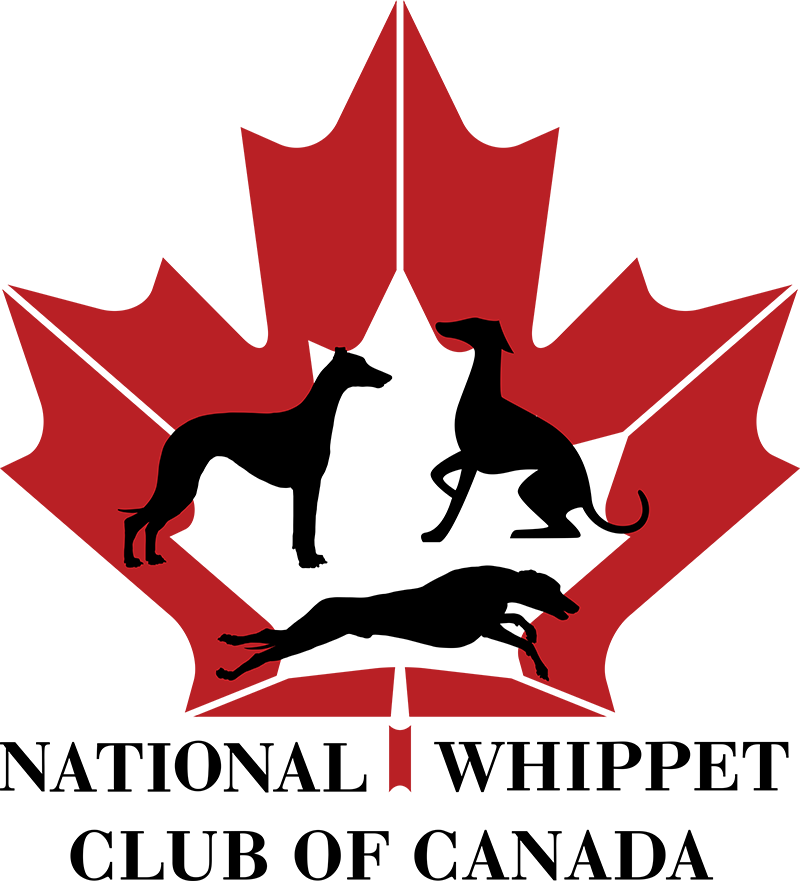
Whippet Breed Standard
The Official Canadian Kennel Club Whippet Standard
What is a Breed Standard?
The breed standard is the blueprint for the ideal specimen and includes size, weight, colour, coat, ear set, tail set, topline, feet, movement, temperament, structure, etc. A breed standard exists for each of the 186 breeds recognized by the Canadian Kennel Club.
The Canadian Kennel Club Whippet Breed Standard
-
Gentle, affectionate, even disposition, but capable of great intensity during sporting pursuits.
-
The Whippet should be a dog of moderate size, very alert, that can cover a maximum of distance with a minimum of lost motion, a true sporting hound. Should be put down in hard condition but with no suggestion of being muscle-bound.
-
Ideal height for dogs 19 – 22 inches; for bitches, 18 – 21 inches. These are not intended to be definite limits, only approximate.
-
Coat close, smooth and firm in texture. Colour immaterial.
-
Long and lean, fairly wide between the ears, scarcely perceptible stop, good length of muzzle which should be powerful without being coarse. Nose leather to be entirely pigmented. Acceptable colours are black in non-dilute coat colours and dark slate or dark brown in dilute coat colours. Teeth white, strong and even. Teeth of upper jaw should fit closely over the lower. Eyes large, intelligent, round in shape and dark hazel, brown or black in colour. Eye colour may vary with coat colour, with a somewhat lighter eye being acceptable in blue dilutes, but regardless of coat colour, darker eyes are to be considered desirable. Fully pigmented eyelid rims are desirable. Expression should be keen and alert. A sulky expression and lack of alertness to be considered most undesirable. Ears small, fine in texture, thrown back and folded. Semi-pricked when at attention.
-
Long and muscular, well arched and with no suggestion of throatiness, widening gradually into the shoulders. Must not have any tendency to an “ewe” neck.
-
Shoulders long, well laid back with long, flat muscles. Forelegs straight and rather long, held in line with the shoulders and not set under the body so as to make a forechest. Elbows should turn neither in nor out and move freely with the point of the shoulder. Fair amount of bone, which should carry right down to the feet. Pasterns strong.
-
Back strong and powerful, rather long with a good, natural arch over the loin creating a definite tuck-up of the underline, but covering a lot of ground. Brisket very deep and strong, reaching as nearly as possible to the point of the elbow. Ribs well sprung but with no suggestion of barrel shape. Should fill in the space between the forelegs so that there is no appearance of a hollow between them.
-
Long and powerful, stifles well bent, hocks well let down and close to the ground. Thighs broad and muscular, the muscles should be long and flat. A steep croup is most undesirable. Feet must be well-formed with strong, thick pads and well-knuckled-up paws.
-
Long and tapering, should reach to a hip bone when drawn through between the hind legs. Must not be carried higher than the top of the back when moving.
-
Low, free moving and smooth, as long as is commensurate with the size of the dog.
-
The importance of structural and movement faults should outweigh those of cosmetic faults. Light yellow, china blue or oblique eye(s) should be strictly penalized. Lack of full nose leather pigment should be penalized to the degree of severity. Gay ears are incorrect and should be severely penalized. Loaded shoulders are a very serious fault. A thin, flat, open foot is a serious fault. A short, mincing gait with high knee action should be severely penalized.
-
• An undershot mouth.
• Any coat type other than as described in the standard.
